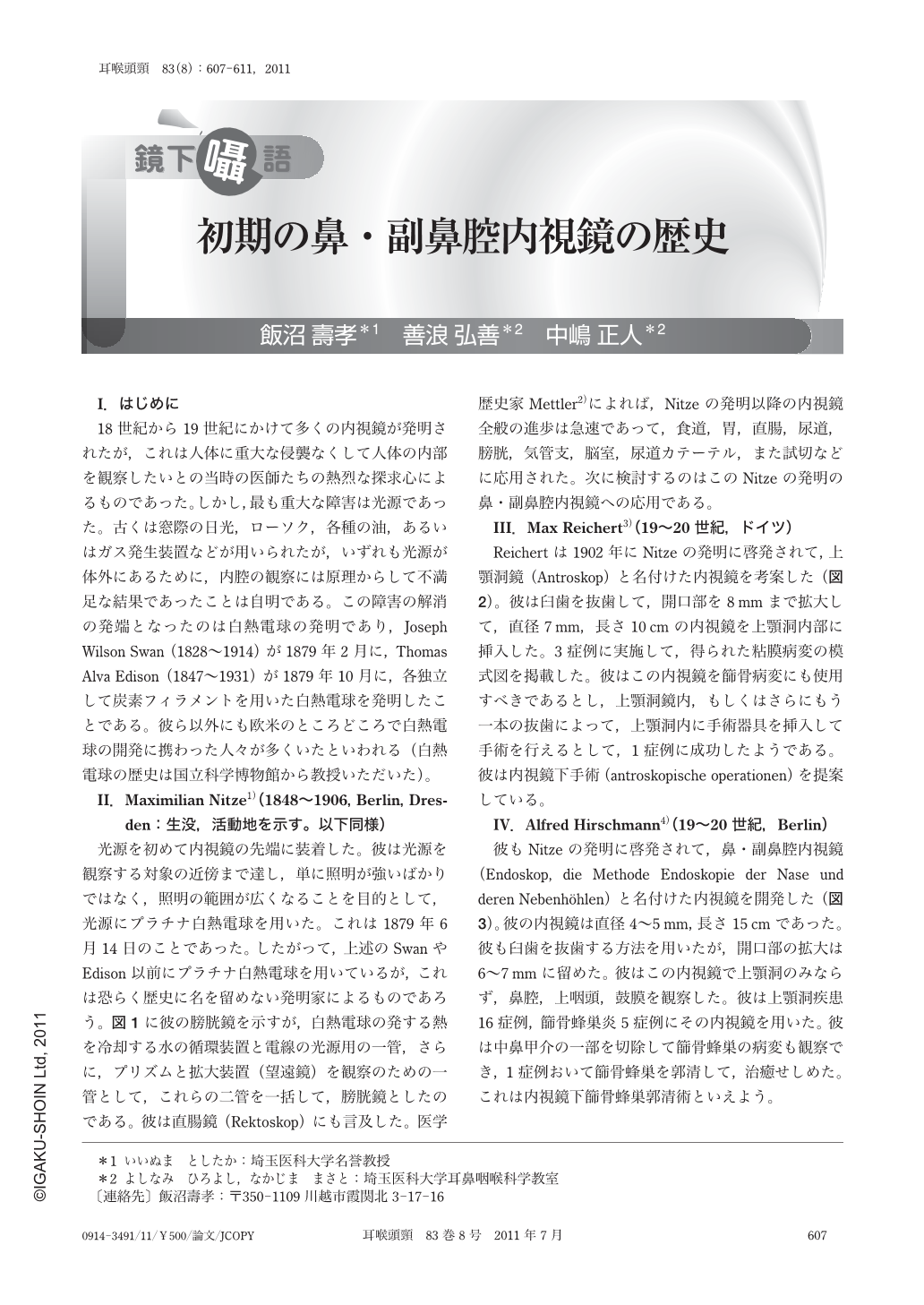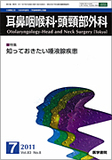Japanese
English
- 有料閲覧
- Abstract 文献概要
- 1ページ目 Look Inside
- 参考文献 Reference
I.はじめに
18世紀から19世紀にかけて多くの内視鏡が発明されたが,これは人体に重大な侵襲なくして人体の内部を観察したいとの当時の医師たちの熱烈な探求心によるものであった。しかし,最も重大な障害は光源であった。古くは窓際の日光,ローソク,各種の油,あるいはガス発生装置などが用いられたが,いずれも光源が体外にあるために,内腔の観察には原理からして不満足な結果であったことは自明である。この障害の解消の発端となったのは白熱電球の発明であり,Joseph Wilson Swan(1828~1914)が1879年2月に,Thomas Alva Edison(1847~1931)が1879年10月に,各独立して炭素フィラメントを用いた白熱電球を発明したことである。彼ら以外にも欧米のところどころで白熱電球の開発に携わった人々が多くいたといわれる(白熱電球の歴史は国立科学博物館から教授いただいた)。
Practically usefull endoscopy in rhinology was first developed as a modified cystoscope of Nitze who first introduced a lens system in conjunction with the closed end and principle of internal illumination by an electric bulb invented notablly by Swan and Edison. Our predecessors modified the cystoscope to be worth much. Several modifications along with differed namings are seen such as:salpingoscope,antroscope,antroscotrocar,endoscopy,sinoscopy,and endorhinoscopy,each being with different maneuvers and functions. It is to be noted that some modified endoscopes were able to practise endoscopic surgeries which are in no ways basically different from the similar present ideas. The endoscopic surgery is the aged procedure seen from the history of the rhinology,maturing in the modern times aided by technical and pharmacological progresses.

Copyright © 2011, Igaku-Shoin Ltd. All rights reserved.


